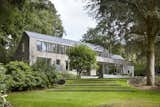Collection by victoria camplin-welch
Architecture
A cramped home in Catalonia gets a dramatic makeover that highlights its best historic details.
Narrow plots pose some very specific challenges for urban architects, and in old cities like Sabadell in Catalonia, Spain, it is a frequent concern. Working with architect Manu Pàges, Barcelona-based design firm The Hall Studio turn a cramped single-family home into a bright, loft-like space with plenty of multipurpose areas.
Tribeca Manufacturing Building
New York–based architect Andrew Franz undertook the renovation of a landmark circa-1884 former soap warehouse in Tribeca, originally designed by George W. DaCunha in the Romanesque Revival style. Franz reorganized and modernized the six-story building—which retains its original 16-foot beam ceilings, brick walls, timber columns, and elevator winches from the former freight shaft—by incorporating steel, glass, handmade tile, and lacquer to complement the masonry and heavy timber. An interior courtyard and rectangular mezzanine are situated below the original 16-foot gull-wing ceiling planes.
10 more saves















![“One of the goals of Zenkaya was to create employment in a country crippled by [an unemployment rate of over 25 percent],” explains the architect, who likes to call himself a social entrepreneur.](https://images2.dwell.com/photos/6063391372700811264/6133435254464974848/original.jpg?auto=format&q=35&w=160)



